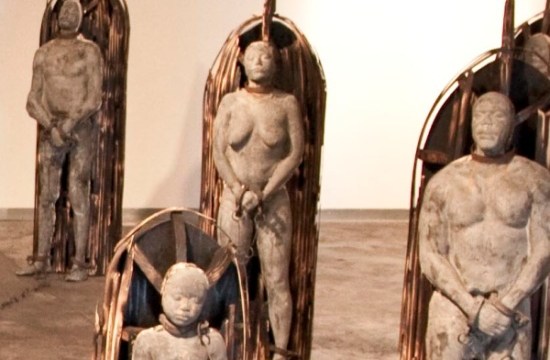What Monkeys Can Tell Us About Ourselves

Evolutionary biases that are hard-wired into our behavior are “really hard to turn off, even when we’re aware of them,” says Yale psychologist Laurie Santos. But at least being aware of them can help us understand why we do what we do. “The fact that we can kind of think twice, pause, kind of inhibit this sort of instinctual bias… that gives us a weapon against these sorts of biases,” says Santos. “But in some sense we have to know they’re there in the first place to actually implement these kind of ‘Wait, wait, wait, let me stop, pause, think about it and try to come up with the right decision.'”
In her most recent Big Think interview, Santos talks about some of the more interesting ways that we can see the roots of these kinds of behaviors in our primate relatives. She says for a long time it was difficult for researchers to understand the motivations of monkeys because they were looking at the problem from a human perspective. In order to understand monkeys, she says, they had to learn to think like monkeys.
Santos also talks about research that seems to indicate similarities to human prejudice in Rhesus monkeys. Evidently monkeys have similar ways of reacting to “in” groups and “out” groups, indicating the same cognitive processing “at the roots of human sexism, human racism, human ageism, basically any form of human group-ism,” she says.
Looking at chimpanzees and bonobos, the closest animal relatives to humans, can be somewhat confusing, says Santos. Chimpanzees are aggressive and warlike, while bonobos are very peaceful, social, and sex-oriented. “There’s a bit of a puzzle in the field of what parts of these two guys did the humans get, you know, are we more like chimpanzees, are we more like bonobos?” she notes. And despite how advanced our species is, Santos notes that humans know maddeningly little about why we have the reproductive system that we have. “We know much more about the reproductive systems of pipe fish and swans and lions, then we do about our own species,” says Santos. “Which is kind of pathetic.”
The animal kingdom is full of colorful ways that males woo mates, and Santos shares one of her favorites: the mating ritual of the buff-breasted sandpiper. “It’s this otherwise kind of drab-looking brown Arctic bird,” she says of the sandpiper. “It’s drab looking because it lives in the Arctic, very hard to get food and do everything. But it kind of allows for its beauty to come out in really strange ways. And one of these ways is that it has incredibly attractive armpit. So, its armpit is very white, very clean and it will do flash displays for females where males will kind of get out in a field and kind of flash its armpit and if the females like the armpit, they can fly from miles and miles and then they’ll do this kind of wonderful armpit display and the females, you know, fall for it.”





